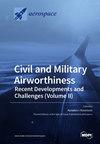Restrain Performance of Child Restraint Systems for 1.5-Year-Old Children on Commercial Airplanes: An Experimental Study
IF 2.1
3区 工程技术
Q2 ENGINEERING, AEROSPACE
引用次数: 0
Abstract
This study aims to compare the restraint performance of two child restraint systems (CRSs) used on airplanes—a rear-facing child seat (RFCS) and the child aviation restraint system (CARES)—for 1.5-year-old children, along with their compatibility with different types of aircraft seats. 16 g longitudinal dynamic tests were conducted on two types of aircraft seats with CRSs. Results indicate poor compatibility of CARES with Type A seats, significantly increasing the risk of head, neck, and abdominal injuries, with Nij exceeding the acceptable limit. In contrast, CARES exhibited good compatibility with Type B seats and effectively protected children. RFCS tests demonstrated effective injury risk reduction on both types of seats. It can be found that the performance of CARES depends on restraint status and seat dimensions; RFCSs provide adequate protection for 1.5-year-olds. Optimal protection can be achieved with smaller restrain angles of CRS and using thinner seat cushions. Compared to CARES, RFCSs better adapt to various aircraft seat structures, offering superior child protection.商用飞机上 1.5 岁儿童约束系统的约束性能:实验研究
本研究旨在比较飞机上使用的两种儿童约束系统(CRS)--面向后方的儿童座椅(RFCS)和儿童航空约束系统(CARES)--对 1.5 岁儿童的约束性能,以及它们与不同类型飞机座椅的兼容性。对带有 CRS 的两种飞机座椅进行了 16 g 纵向动态测试。结果表明,CARES 与 A 型座椅的兼容性较差,大大增加了头部、颈部和腹部受伤的风险,Nij 超过了可接受的限度。相比之下,CARES 与 B 类座椅的兼容性较好,能有效保护儿童。RFCS 测试表明,两种类型的座椅都能有效降低伤害风险。可以发现,CARES 的性能取决于约束状态和座椅尺寸;RFCS 可为 1.5 岁儿童提供足够的保护。使用较小约束角度的 CRS 和较薄的座垫可以达到最佳保护效果。与CARES相比,RFCS能更好地适应各种飞机座椅结构,为儿童提供更好的保护。
本文章由计算机程序翻译,如有差异,请以英文原文为准。
求助全文
约1分钟内获得全文
求助全文
来源期刊

Aerospace
ENGINEERING, AEROSPACE-
CiteScore
3.40
自引率
23.10%
发文量
661
审稿时长
6 weeks
期刊介绍:
Aerospace is a multidisciplinary science inviting submissions on, but not limited to, the following subject areas: aerodynamics computational fluid dynamics fluid-structure interaction flight mechanics plasmas research instrumentation test facilities environment material science structural analysis thermophysics and heat transfer thermal-structure interaction aeroacoustics optics electromagnetism and radar propulsion power generation and conversion fuels and propellants combustion multidisciplinary design optimization software engineering data analysis signal and image processing artificial intelligence aerospace vehicles'' operation, control and maintenance risk and reliability human factors human-automation interaction airline operations and management air traffic management airport design meteorology space exploration multi-physics interaction.
 求助内容:
求助内容: 应助结果提醒方式:
应助结果提醒方式:


